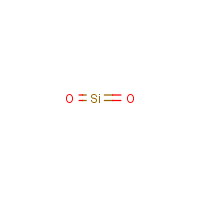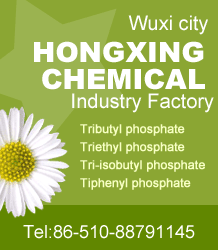USING SILICA GEL SACHETS
Inquiry
| Post Date: | Apr 17,2013 |
| Expiry Date: | Oct 14,2013 |
| Detailed Description: |
Cas No. :112926-00-8
Payment Method: TT/LC The aim of using silica gel sachets is to minimise the risk of irreversible damage to items in transit or store caused by condensing water vapour. By adsorbing water molecules, a silica gel sachet will reduce the Relative Humidity inside a package to levels at which condensation will not occur . :: Three main moisture sources need to be considered :: (1) That from the air contained in the package. (2) That from the packing added inside of the package (e.g. for cushioning purposes). (3) That which diffuses through the outer packaging during storage or transit. These factors are considered in British Standard 1133: Section 19: 1968 as (a) The area of the moisture barrier : A (in square meters). (b) The type of moisture barrier : R is the moisture vapour transmission rate of a barrier (in grams per square meter per 24 hours, measured at 90% relative humidity and 38°C). (c) The volume of the air inside the barrier : V (in cubic meters of the container). (d) The weight and type of any packaging material inside the barrier. This is known as the dunnage factor : DF (D is the weight of packing material in grams and F is a factor depending on the type of dunnage and its probable moisture content). (e) The length of time protection is required : M (in months). (f) The type of climate - temperate (average 25°C and 75% relative humidity) or tropical (average 38°C and 90% relative humidity). Typical R values are : 10 for a thin polybag. 3.4 for a heavy duty polybag (500 gauge). 2 for a heavy duty polybag (1000 gauge). 0.05 for an aluminium barrier foil. F values are : 1/5 for timber of moisture content higher than 14%. 1/8 for felt, carton board and similar general packaging work. 1/10 for plywood and timber with a moisture content less than 14%. :: They are used in the following formulae :: For temperate climates W = 11 x A x R x M + DF For tropical climates W = 40 x A x R x M + DF For hermetically sealed containers W = 170 x V + DF Where W is the weight of silica gel required (in grams). It is difficult to get exact weights of silica gel required from the above formulae owing to the many variables that have to be considered, some of which are difficult to measure. The formulae can, however, be a useful guide to indicate the amount of silica gel required to give adequate protection - it is often prudent to choose the nearest standard size silica gel sachet above the value that W comes out at. For large values of W, a more effective solution than using a single large sachet, is using a number of smaller sachets spread around the package. This will reduce the Relative Humidity at a faster rate. :: Items especially at risk. :: Condensation of water vapour from air will not occur, even when the relative humidity approaches 100%, providing the air temperature remains constant. So the risk of condensation (and therefore corrosion) arises mainly because of large drops in air temperature, where at the new lower temperature, the volume of water vapour is too much for the air to hold. Special attention needs to be paid in situations where (a) variations between daytime and night-time temperatures reach 20 - 30°C. (b) seasonal temperature variations are large. (c) temperature variations occur due to the intermittent functioning of encased apparatus such as electrical conductors and resistors, fuses, circuit breakers or relay motors, which release calories when in use. The greatest risk of condensation is in high humidity environments, where a drop of just 5°C will on average, cause water vapour to condense. As a general rule it is enough to maintain the relative humidity of the enclosed air below 30% to avoid all risk of condensation. |
| CAS Registry Number: | 112926-00-8 |
| Synonyms: | ;Dry silica gel;cataloid;the(r) desiccant;silicon dioxide pyrogene, high dispers;silver nitrate-impregnated silica gel;sulfuric acid-impregnated silica gel;sand;dry silica gel,high-effecienty;amorphous silica gel;gel & precipitated silica;silica, amorphous;silica, amorphous, precipitated and gel;silica gel desiccant;silicon dioxide, amorphous gel;amorphous silicadust;amorphous silicon dioxide;prep sep si;silicic acid, precipitated;colloidal silica;Silicon dioxide, amorphous gel in isopropanol;Silicasol;silica sol;silica solution; |
| Molecular Formula: | SiO2 |
| Molecular Weight: | 60.0843 |
| Molecular Structure: | 
|
| Hazard Symbols: |  Xi:刺激性物质‖T; Xi:刺激性物质‖T; |
| Risk Codes: | R20:吸入有害‖R37; |
| Safety Description: | S22:不要吸入粉尘‖S45 ; |
| Company: | Qingdao Double Dragon Industry Co.,Ltd. [ China ] |
| Contact: | SUE |
| Tel: | +86-532-85889188 |
| Fax: | |
| Email: | susan@qddoubledragon.com |
-
Disclaimer statement:The information and data included above have been realized by the enterprises and compiled by the staff, and are subject to change without notice to you. The Chemnet makes no warranties or representations whatsoever regarding the facticity, accuracy and validity of such information and data. In order to ensure your interest, we suggest you chose the products posted by our gold suppliers or VIP members.


